The Twang Bar King summons a court of world-class players for this fall’s BEAT Tour, including Steve Vai and fellow King Crimson alumnus Tony Levin, plus Tool drummer Danny Carey. Their mission: Playing the music of Crimson’s classic troika of ’80s albums: Discipline, Beat, and Three of a Perfect Pair. And, of course, Adrian brings his period-correct rig back out on the road, with some improvements and additions.
Adrian Belew is one of the most inventive guitarists of the past half-century—an incandescent player and songwriter who has a vast menagerie of tones and sounds at his command. You’ve heard him with King Crimson, Talking Heads, David Bowie, and Frank Zappa, among others, and with his pop band the Bears and on his solo recordings and tours.
This fall, Adrian is following dates with the Talking Heads-fueled Remain in Light tour, which he co-led with Heads keyboardist and guitarist Jerry Harrison, with the BEAT Tour—a run drawing on his recordings with King Crimson in the ’80s: the albums Discipline, Beat, and Three of a Perfect Pair. Of course, this is just a small—but extremely potent and influential—portion of his 30-year collaboration with Crimson founder Robert Fripp, who has given BEAT his blessing. But putting this repertoire in the hands of Belew, fellow Crimson alum and super-bassist Tony Levin, the incendiary Steve Vai (playing the guitar role of Fripp), and the Earth-shaking drummer Danny Carey from Tool promises magical performances. It’s also one of the year’s most-anticipated tours.
As I write this, Belew, Levin, Vai, and Carey are rehearsing on the West Coast, and by the time this video posts, they will have played their first BEAT dates. So, word is likely to have spread that Belew has brought some crucial pieces of gear he played with ’80s Crimson back into play. But here, you’ll get a close up look and listen as Premier Guitar joins Adrian—with tech Blair White of Nashville’s Eastside Music Supply—at his mid-Tennessee home for a pre-tour Rig Rundown. Dig in!Brought to you by D’Addario.
Fly Guy
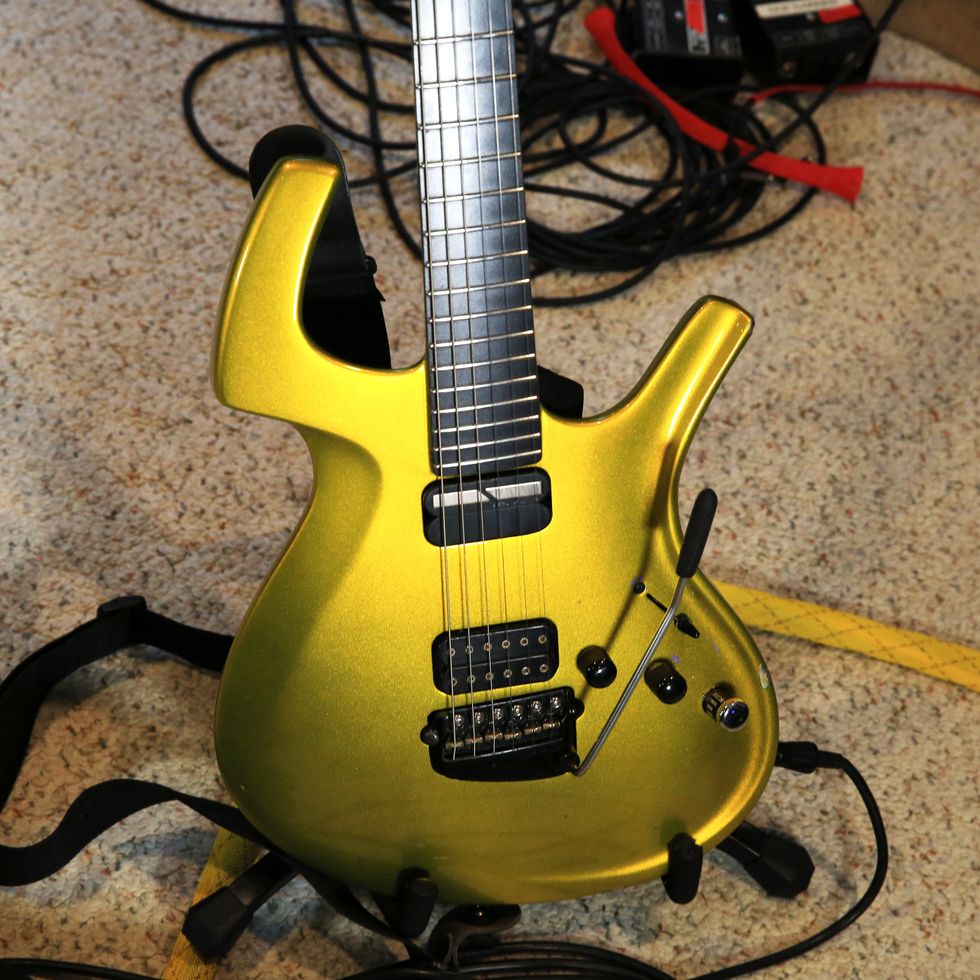
The guitarist’s own Adrian Belew Signature Parker Fly is back on the music highway. The hard-to-find model sports exceptional—and some unconventional—appointments, like a 13-pin out for MIDI/synth capability. It has a DiMarzio humbucker, a Sustainiac humbucker, some Line 6 Variax components, Parker’s flat-spring vibrato system, Sperzel tuners, and a solid poplar body and basswood neck under its carbon/glass/epoxy exoskeleton.
Harmony, Man!
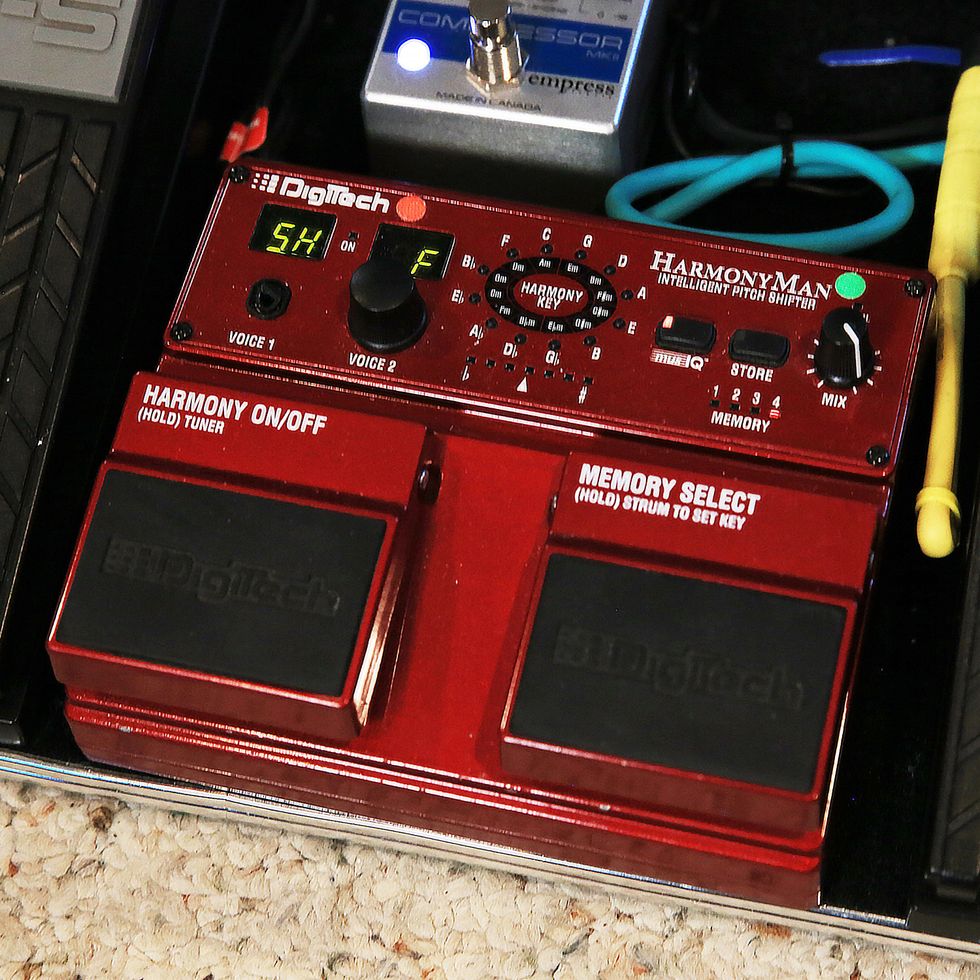
Adrian’s DigiTech Harmony Man is set at a fifth up during the opening of this Rig Rundown—one of his favorite settings with the pitch-shifting device.
Mind the Mastermind
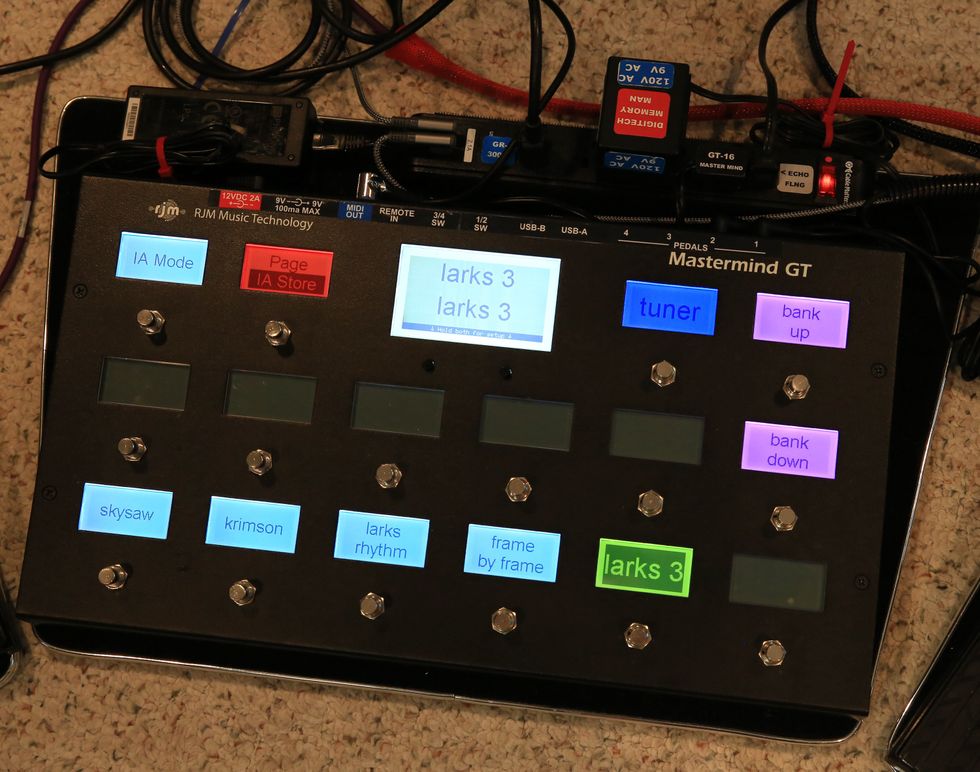
Belew uses an RJM Mastermind MIDI controller as part of his rig’s cerebellum.
The Board, Part 1
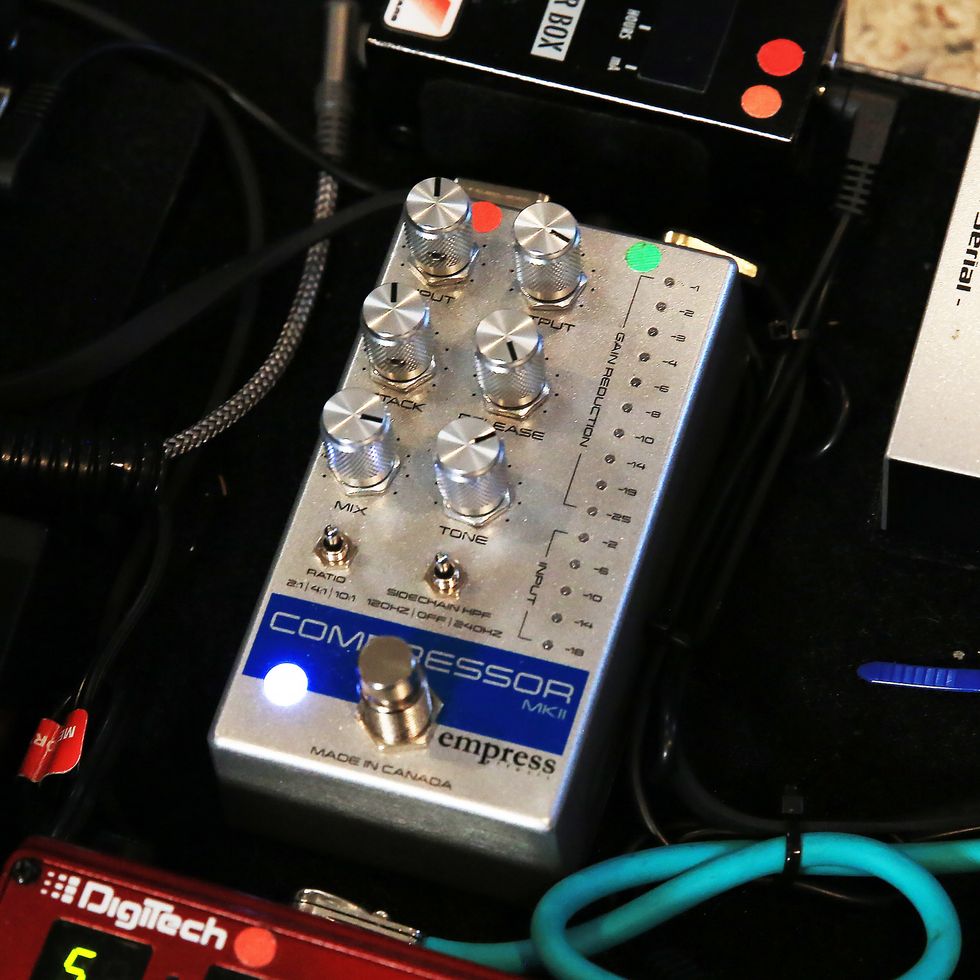
A Boss GKC-AD converter lets Adrian use his Parker Fly with conventional stompboxes. Its neighbors include an Empress Compressor MkII, a Fractal Axe-Fx Ultra (Adrian has several hundred programs that he wrote into this Fractal that are not transferable to newer models), a Big Joe lithium battery power box, and volume and expression pedals. That’s all part of his self-proclaimed “modern rig.”
Sir Roland of Synth

Yes, Adrian has taken the Roland GR-300 Polyphonic Guitar Synthesizer that he acquired for King Crimson in 1981 out of mothballs, so he can recreate every sound fans for this much-anticipated tour want to hear. It was used for “Industry,” “The Sheltering Sky,” “Three of a Perfect Pair,” and other classics. “I could not do it right without this,” he says. The GR’s companions are a volume pedal, TC Electronic PolyTune, another Big Joe power box, and a custom glitching device.
Twang Me Back Home
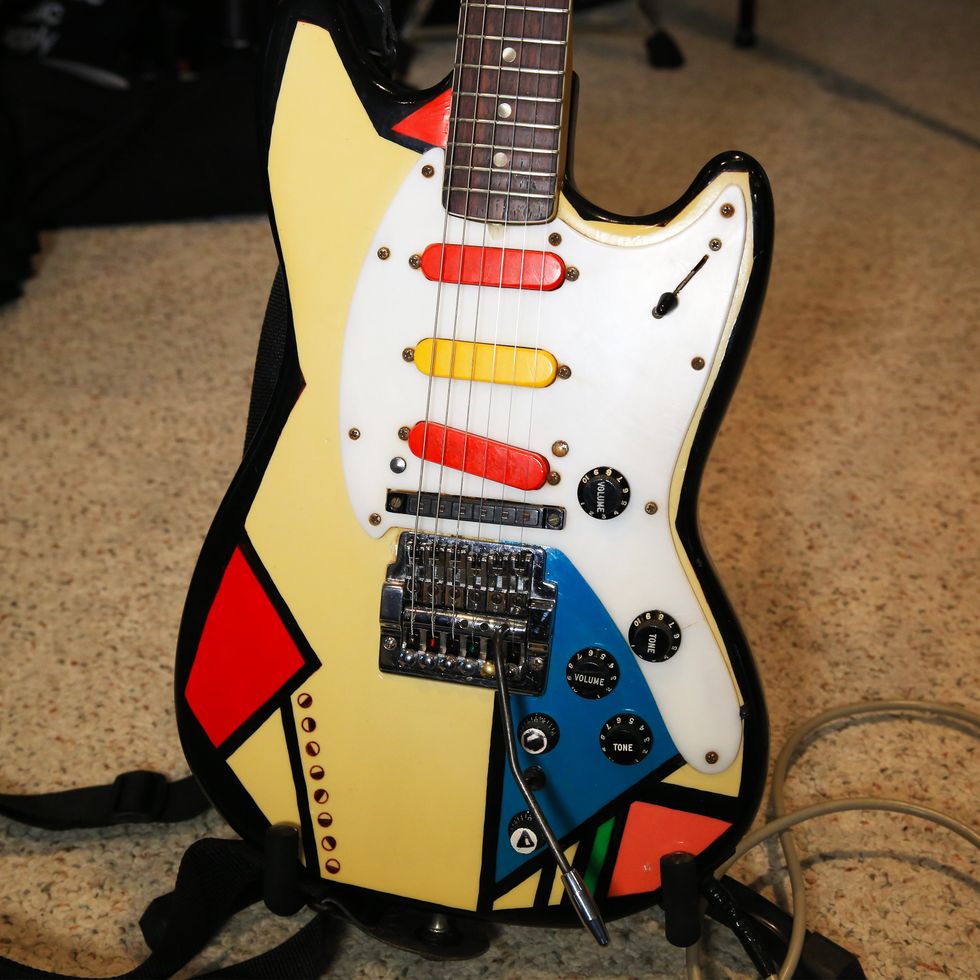
Also on tour is Adrian’s famed Twang Bar King guitar (which debuted on the heels of his 1983 Twang Bar King album), which requires a 21-pin plug to make its sonic sorcery. In the video, Adrian shows how it functions as both a conventional guitar and the GR-300’s controller. This guitar had to be refreshed, since it was semi-retired, and is now back in full service. It started life as a Mustang, and now it’s a one-of-a-kind show pony, with a Kahler and Lace Sensor pickups. In this video, Adrian uses the Twang Bar King guitar to demonstrate some tunings for specific Crimson songs.
Racked Up
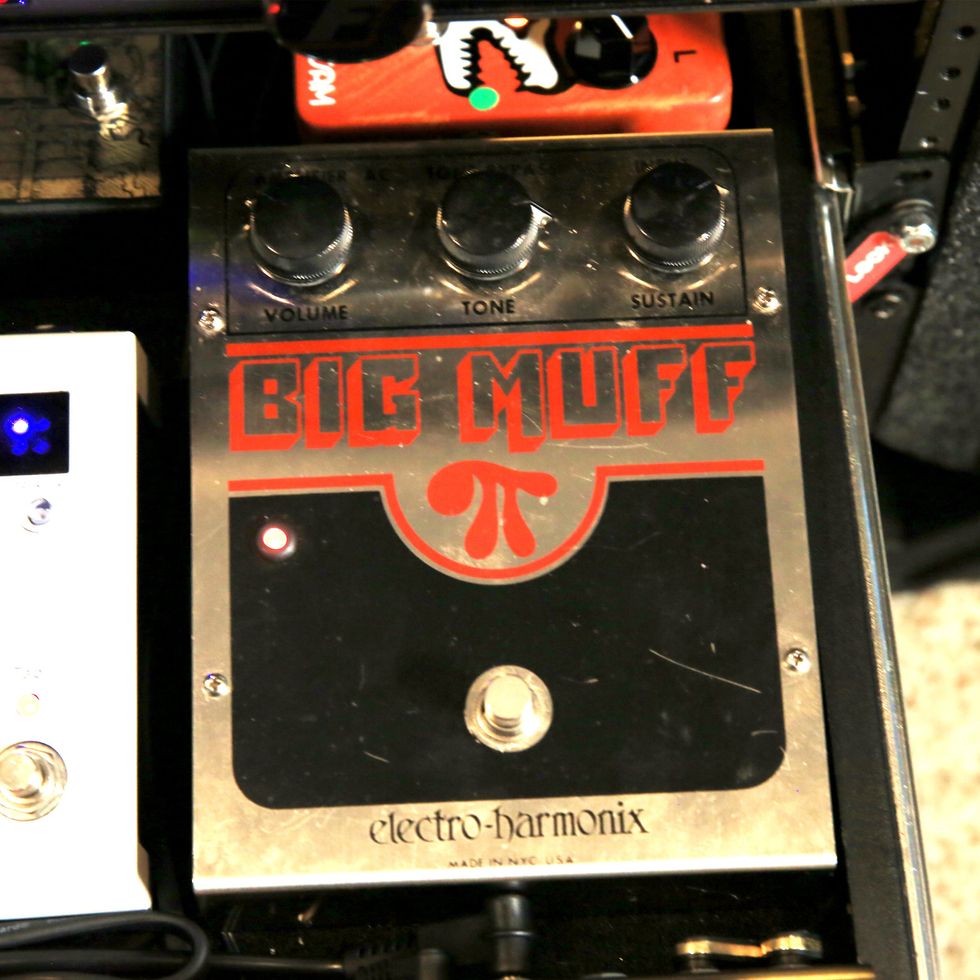
The signal to the rack gear flows from Adrian’s guitar to an always-on JAM Pedals Dinosaur Compressor, to a late-1970s V4 op-amp Big Muff, an MXR Ten Band EQ, a Strymon Deco V2, an Eventide H9, a Source Audio Artifakt lo-fi pedal (fuzz, reverb, modulation, rig mod, etc.), a Source Audio Nemesis Delay, and a Lichtlaerm Audio The Key and Gate noise gate. Adrian and Blair spent days running through various Big Muff pedals from different eras, and the ’70s V-4 is the only model that allowed Adrian to recreate his feedback acrobatics!
Echo, Echo, Echo ...
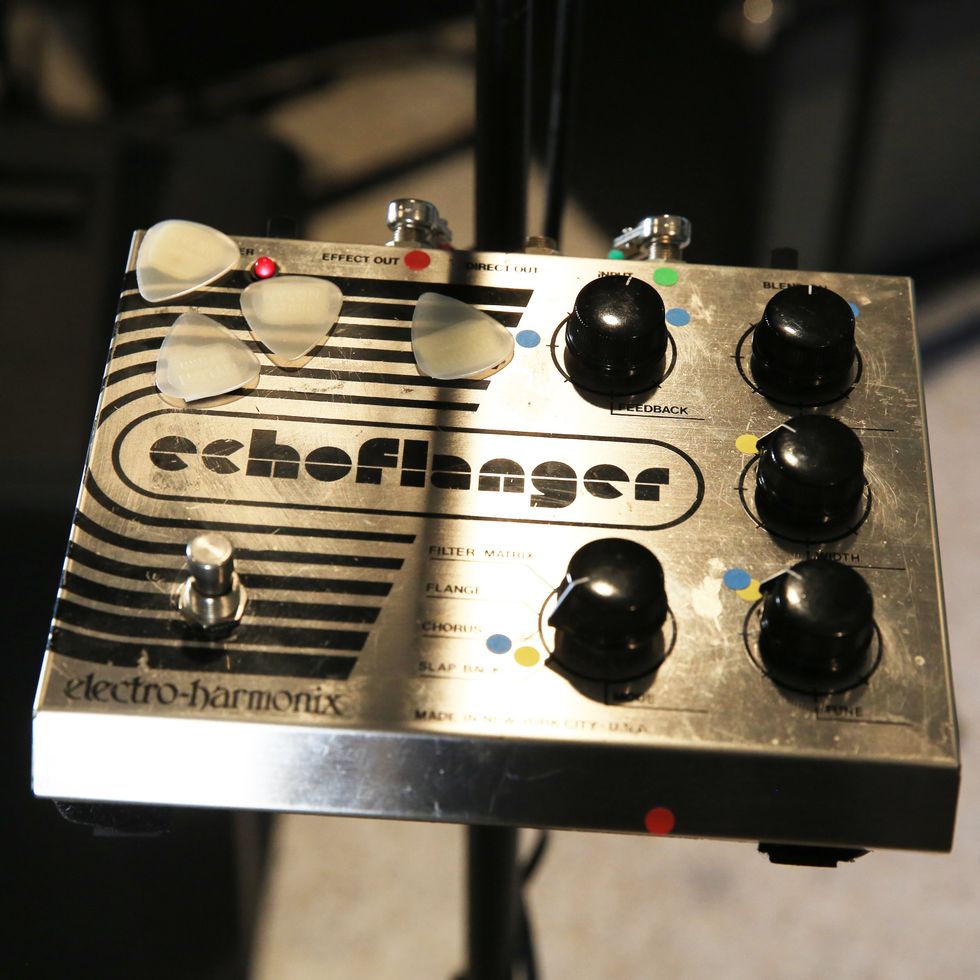
It’s not on the floor, because Adrian manipulates it with his hands, but also on this journey is his original Electro-Harmonix Echoflanger! He likes to use it set to between-setting spots, for maximum weirdness.
The Original JC-120
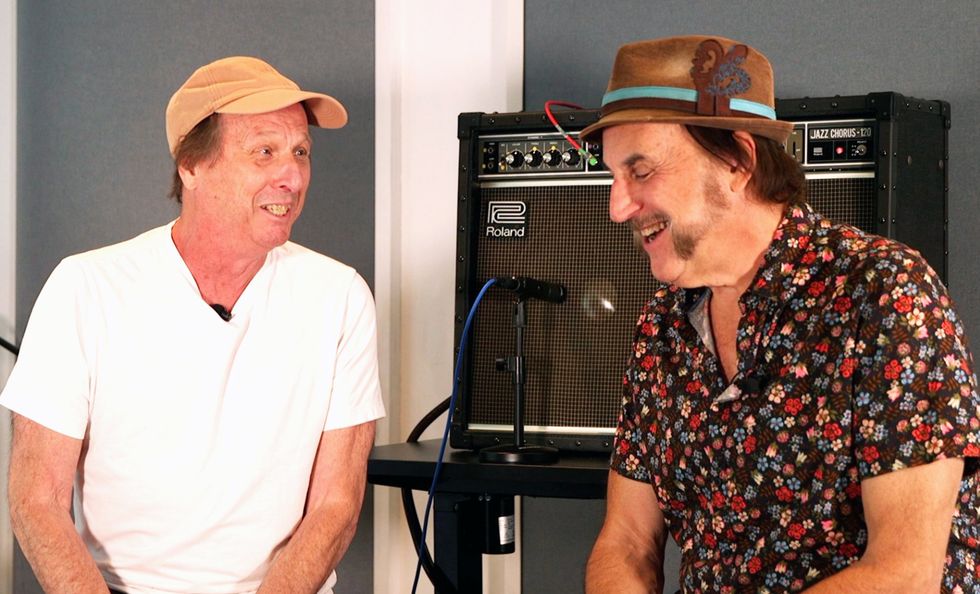
Yes, that’s right: Adrian is using the early-’70s Roland JC-120 amp he played with Bowie, King Crimson, and Talking Heads for the BEAT Tour. Despite its many road miles, the amp looks pristine.
Shop Adrian Belew's Rig

DiMarzio Humbucker
Sperzel Tuners
Boss GKC-AD Converter
Empress Compressor MkII
Big Muff
MXR Ten Band EQ
Strymon Deco V2
Eventide H9
Source Audio Artifakt lo-fi pedal
Source Audio Nemesis Delay
Roland JC-120


![Adrian Belew/BEAT Tour Rig Rundown [2024]](https://www.premierguitar.com/media-library/youtube.jpg?id=53638946&width=1200&height=675)

![Rig Rundown: Russian Circles’ Mike Sullivan [2025]](https://www.premierguitar.com/media-library/youtube.jpg?id=62303631&width=1245&height=700&quality=70&coordinates=0%2C0%2C0%2C0)




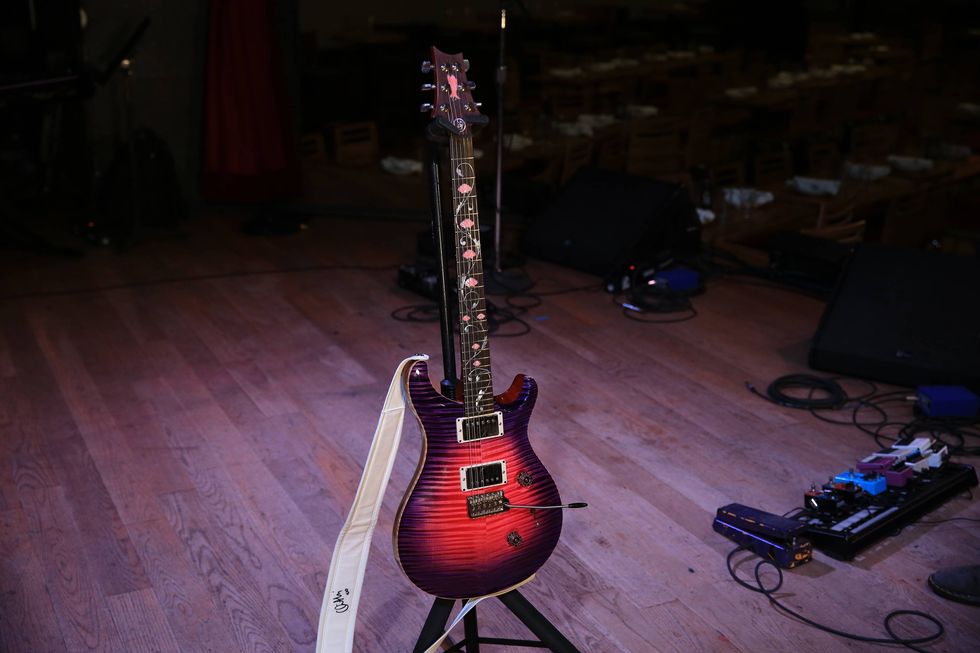
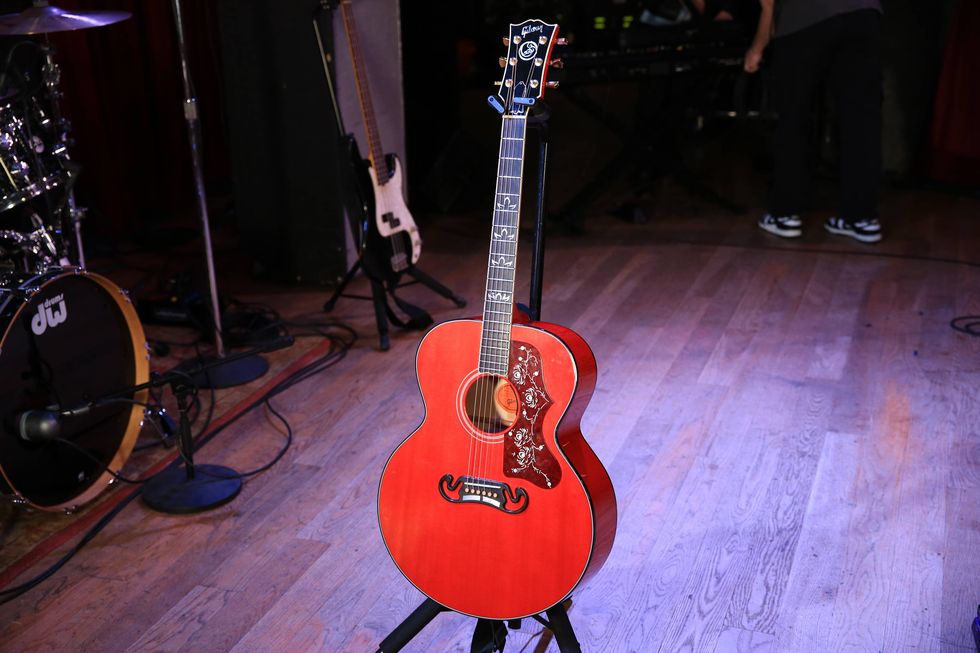
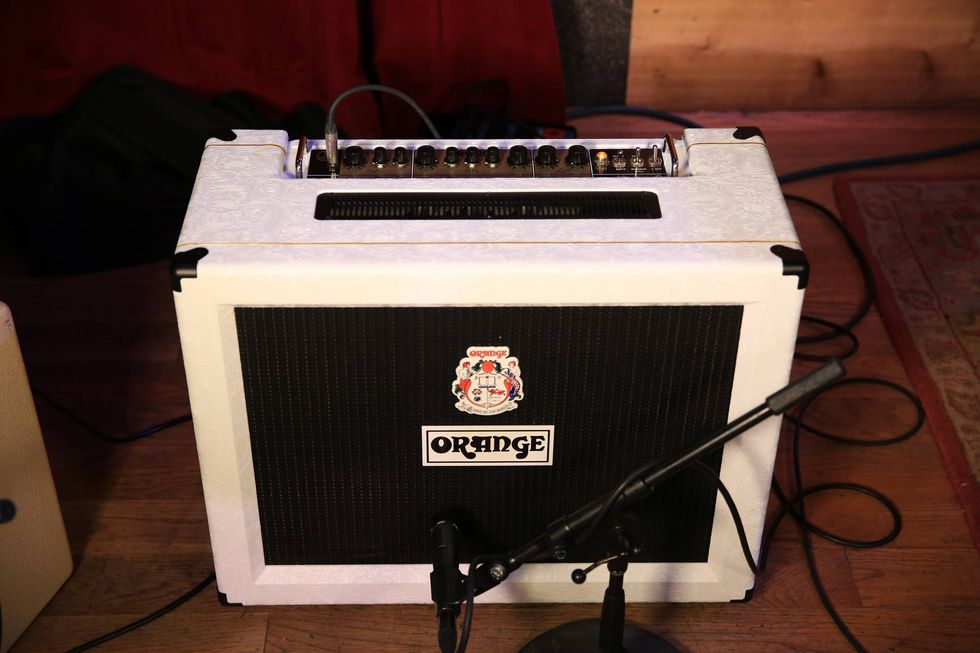
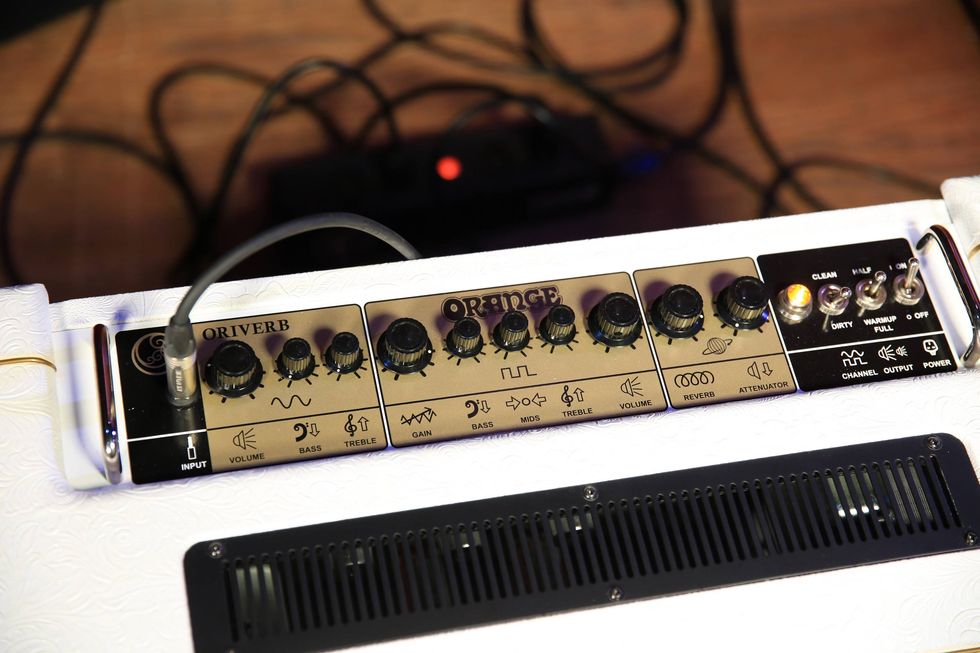
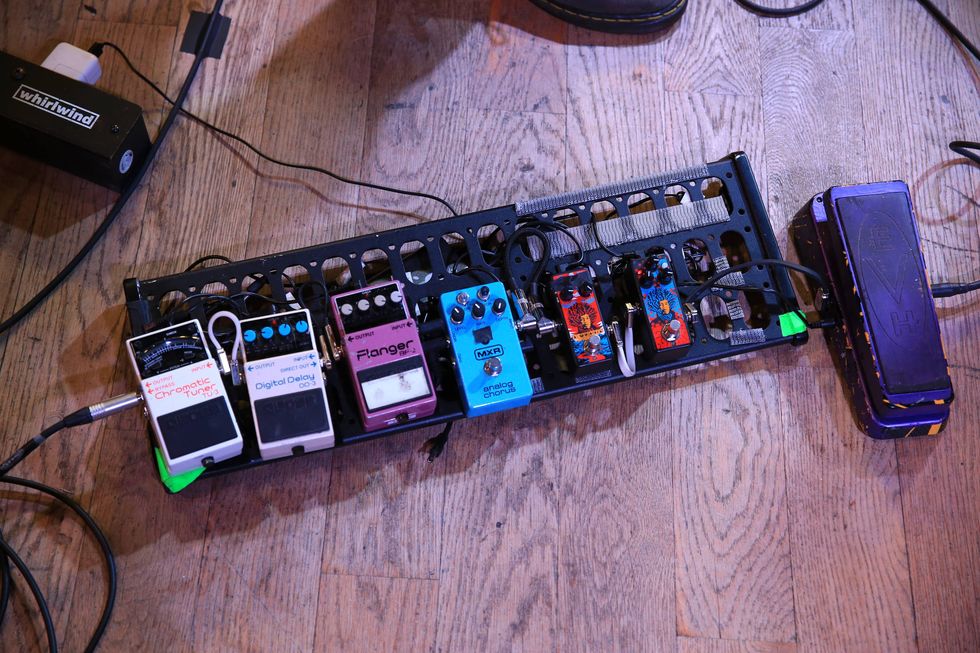







![Rig Rundown: AFI [2025]](https://www.premierguitar.com/media-library/youtube.jpg?id=62064741&width=1245&height=700&quality=70&coordinates=0%2C0%2C0%2C0)












 Shop Scott's Rig
Shop Scott's Rig







 Zach loves his Sovtek Mig 60 head, which he plays through a cab he built himself at a pipe-organ shop in Denver. Every glue joint is lined with thin leather for maximum air tightness, and it’s stocked with Celestion G12M Greenback speakers.
Zach loves his Sovtek Mig 60 head, which he plays through a cab he built himself at a pipe-organ shop in Denver. Every glue joint is lined with thin leather for maximum air tightness, and it’s stocked with Celestion G12M Greenback speakers.
















![Devon Eisenbarger [Katy Perry] Rig Rundown](https://www.premierguitar.com/media-library/youtube.jpg?id=61774583&width=1245&height=700&quality=70&coordinates=0%2C0%2C0%2C0)






